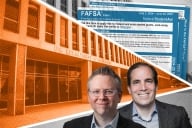You have /5 articles left.
Sign up for a free account or log in.
This is the time of year full of hysterical news articles about what a small share of applicants gained admission to the likes of Stanford University or the University of California at Berkeley.
Those reports may be true with regard to those institutions, but the 2014 State of College Admission report from the National Association for College Admission Counseling offers data from a survey of four-year college admissions offices that reflect the vast majority of American colleges and students. And the results are quite different from the media hype.
It is true, for example, that more students are applying to more colleges than they have in the past. Thirty-two percent of fall 2013 freshmen had submitted seven or more applications for admission, an increase of 10 percentage points since 2008.
But as Sweet Briar College demonstrated this year, more applications generally may not mean more students. In the five years before the college's board announced plans to shut down, applications increased from 572 per year to 936. But the college couldn't persuade enough of those who were accepted to enroll, and it saw its yield (the percentage of admitted applicants who enroll) drop from 33 to 21 percent.
The NACAC survey found that for the classes colleges enrolled in fall 2013, the average institutional yield rate continued a long-term drop, to 36 percent. In 2002, the national average was 49 percent.
Many colleges are thus admitting more applicants but enrolling fewer of them. And the result is that most four-year colleges are not competitive in admissions. As has been the pattern in recent years, the average admission rate (the percentage of applicants who are admitted) is in the mid-60s. The new data show the figure at 64.7 percent, up one point from the previous year, but down from the years before that. Despite these ups and down (which are modest), colleges with single-digit percentage admissions rates (some Ivies, etc.) are quite atypical.
A new issue NACAC is tracking is interest in transfer applications. As the population of high school graduates has fallen in many states, and concern about student loans has increased, both students and colleges are embracing the idea (long favored by many) of students starting at community colleges. Seventy percent of four-year colleges reported that they held recruitment events at community colleges.
But while some colleges reported increased numbers of transfer applicants, others didn't -- with more selective colleges being in the latter group. And while many private colleges are starting to focus on the transfer student, public institutions are way ahead.
At public institutions, the freshman-to-transfer ratio for admitted students averaged 5 to 1, while the figure was 18 to 1 for private colleges. And at private colleges that accept fewer than 50 percent of applicants, the ratio was 25 to 1.








